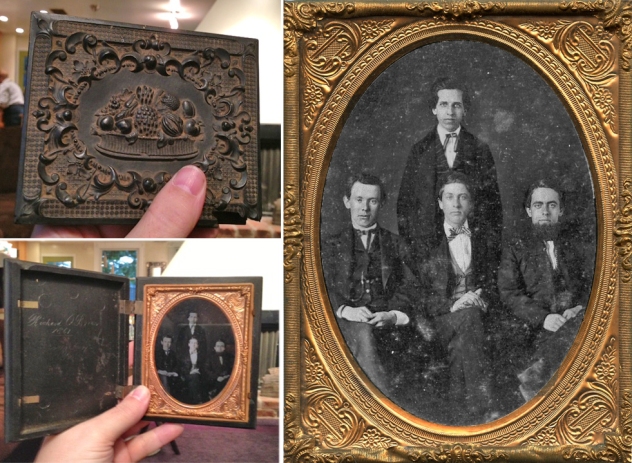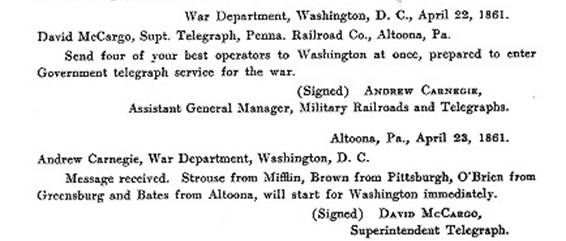Another item found among my grandmother’s things was this picture in a case. The picture itself is an ambrotype (on glass plate) and the case features the inscription “Richard O’Brien 1861” on the inside. The image is of four young telegraph operators, now know to be “The Immortal Four”. These were the first four men to answer Andrew Carnegie’s call to action. They were David Strouse (left), David Homer Bates(center), Samuel M. Brown(back) and Richard O’Brien(right).
About a week after the attack on Fort Sumter the nation began choosing up sides to go to war. It was clearly shaping up to be a war between the North and the South. However, at the outset, it wasn’t so cut and dry. People with opposing sympathies were living side by side, all mixed together and spread throughout the county. Nowhere was this volatile mix of opposing Americans so concentrated as it was in Baltimore.
Washington DC, was below the Mason-Dixon Line which put the Union capitol in southern territory. As people sympathetic to the South left the capitol they cut the telegraph lines from DC. In a pitch to isolate the capitol and prevent Union troops from coming to her defense Southern supporters in Baltimore cut telegraph lines from DC. They also destroyed train tracks between Baltimore and DC as well as tracks from Baltimore to Philadelphia.
James Cameron, Lincoln’s Secretary of War, called upon Colonel Thomas A. Scott, who was then Manager of the Pennsylvania Rail Road. Scott and his Assistant, Andrew Carnegie, made their way to Washington to assess the situation. Upon finding such dire conditions in the nation’s capitol Carnegie sent the following message to the office in PA. requesting telegraph operators.
Richard O’Brien was nineteen when he left his family and answered the call.